Key takeaways:
- Sustainability in innovations is necessary for future generations, requiring a balance between economic viability and environmental stewardship.
- Africa-Europe collaboration harnesses unique strengths from both continents, fostering groundbreaking solutions rooted in shared knowledge and cultural relevance.
- Challenges in sustainable innovations include resistance to change, cost barriers, and gaps between research and real-world implementation.
- Effective collaboration strategies involve building trust through communication, aligning shared goals, and investing in capacity-building initiatives for sustainable progress.
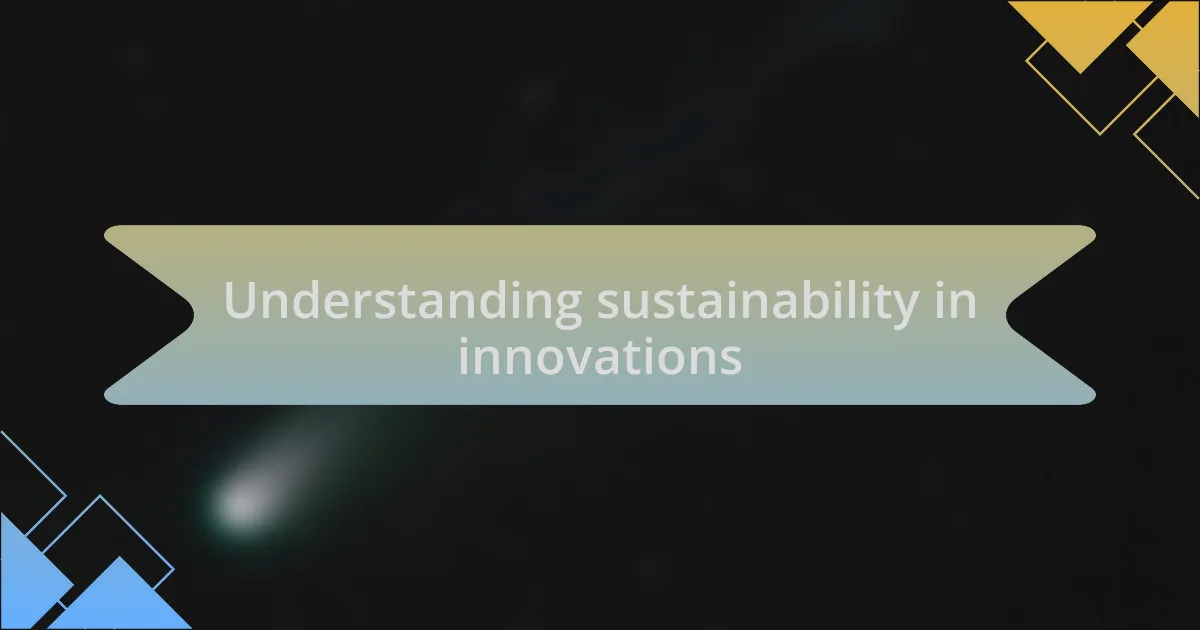
Understanding sustainability in innovations
Sustainability in innovations isn’t just a trend; it’s a necessity that reflects our collective responsibility towards future generations. I often think about how many innovative solutions we discuss today might look outdated in a few years if they don’t align with sustainable practices. For instance, when I first encountered renewable energy technologies in Africa, I was both fascinated and somewhat disturbed by how much potential was being overlooked simply due to short-term profit goals.
When I work with various projects, I’m constantly reminded of the importance of balancing economic viability and environmental stewardship. Take, for example, a recent initiative focused on sustainable agriculture: the farmers involved shared their struggles in adopting eco-friendly methods, yet they highlighted the satisfaction of seeing their land recover over time. It makes me wonder, how do we motivate more innovators to embrace this balance? Could it be that a strong emotional connection to our planet could fuel the urgency for innovative change?
Moreover, sustainability requires a shift in mindset where they view innovations not just as solutions but as part of an intricate web of ecological and social systems. I think about a inspiring conversation I had with a group of young engineers who were developing a biodegradable packaging alternative. Their excitement about the environmental impact resonated deeply with me. It’s as if they understood intuitively that the innovations of tomorrow must reflect the environmental truths of today. What if we all approached our projects with that same passion?
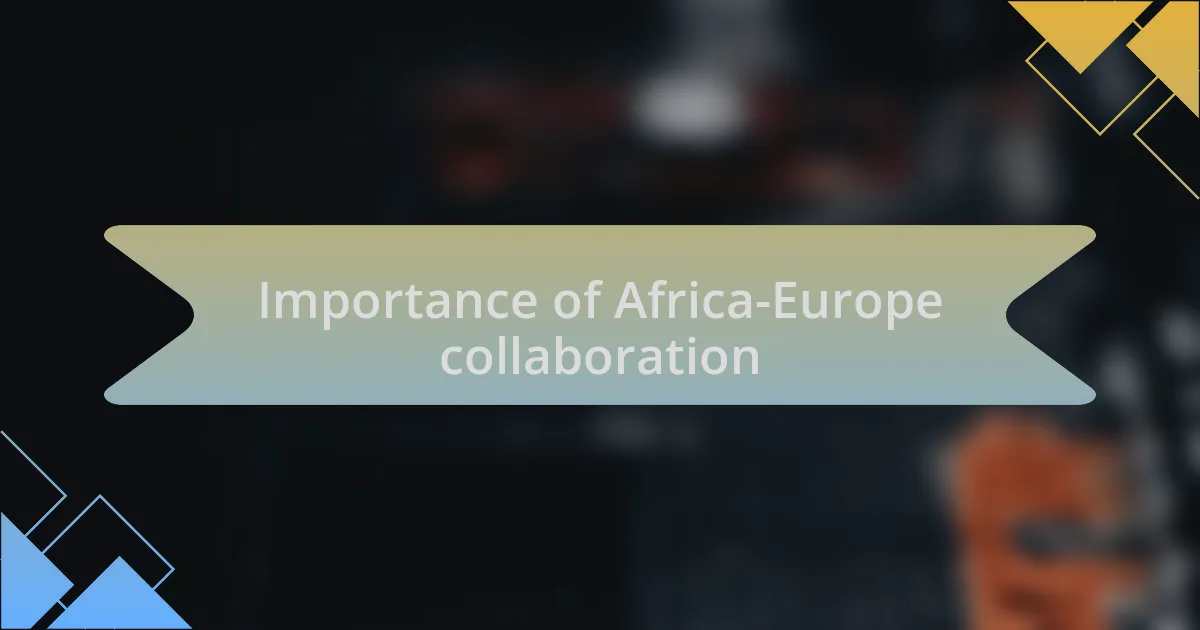
Importance of Africa-Europe collaboration
The collaboration between Africa and Europe is crucial for addressing global challenges, particularly in sustainability and innovation. Having visited several collaborative projects, I’ve seen firsthand the creativity and resilience that emerges when different cultures and perspectives come together. It’s fascinating to observe how shared knowledge and resources can amplify efforts toward sustainable solutions, ultimately benefiting both continents.
In many discussions, I find myself reflecting on the unique strengths that Africa and Europe bring to the table. For instance, African innovators often have a keen understanding of local needs and environmental nuances, while European partners tend to excel in research and technology development. This synergy can lead to groundbreaking solutions that are not just effective, but also culturally relevant. I can’t help but wonder, how many life-changing ideas could surface if we continue to deepen these partnerships?
When I think about the future, the potential impact of Africa-Europe collaboration becomes even clearer. One project I was involved with highlighted the successful exchange of sustainable farming techniques, blending traditional practices with modern technology. Witnessing farmers from different backgrounds share their experiences was truly uplifting. It made me realize that when we unite our diverse expertise, we not only innovate but also foster a sense of community that reinforces our commitment to a sustainable future. How can we ensure that this spirit of collaboration continues to thrive in our global society?
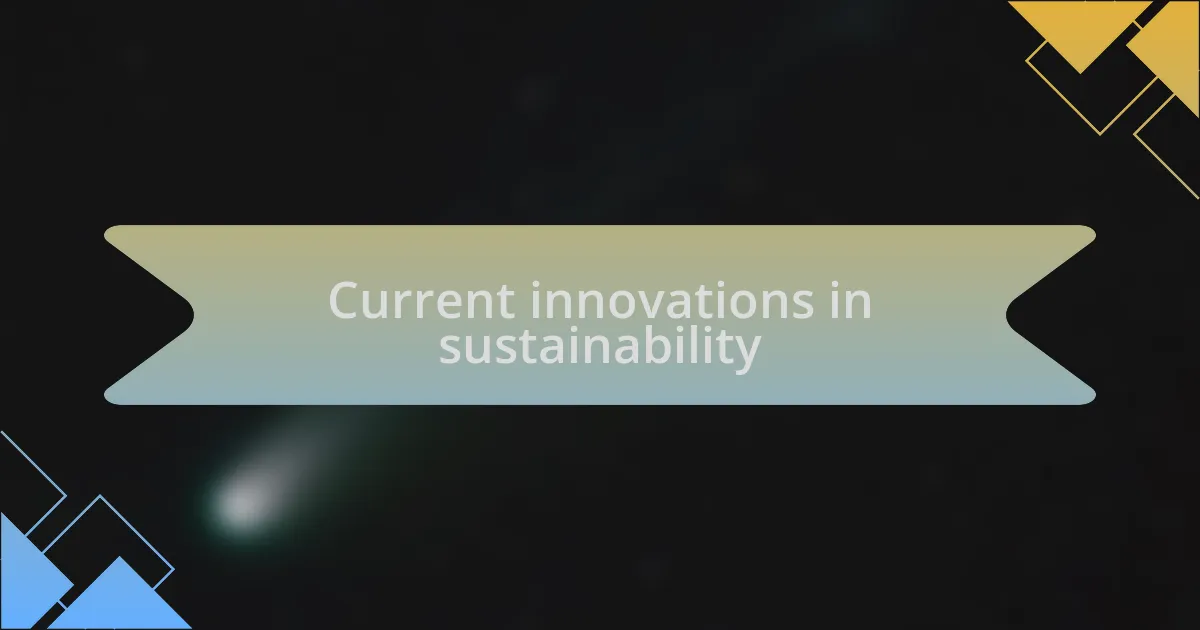
Current innovations in sustainability
Current innovations in sustainability reflect a remarkable blend of creativity and practicality. For example, in my experiences with tech start-ups focused on clean energy solutions, I observed how solar panels are now being integrated into everyday structures. This approach not only harnesses natural energy but also transforms urban spaces into greener environments. Isn’t it amazing how innovation can reshape something as fundamental as our homes?
One particularly inspiring initiative involved a group of young entrepreneurs who developed an app to connect local farmers with urban consumers. This innovation improves food distribution while minimizing waste. It made me feel hopeful, seeing how technology can empower communities and promote sustainability. Have you ever considered how a simple app can create vast changes in people’s lives?
Finally, I was captivated by a project in which researchers are exploring biodegradable materials made from agricultural waste. The thought of turning something often discarded into valuable products is genuinely transformative. It raises the question: how many more innovative solutions could emerge if we rethink our approach to waste? Each of these advancements contributes to a more sustainable future and highlights the endless possibilities when we prioritize collaboration in innovation.
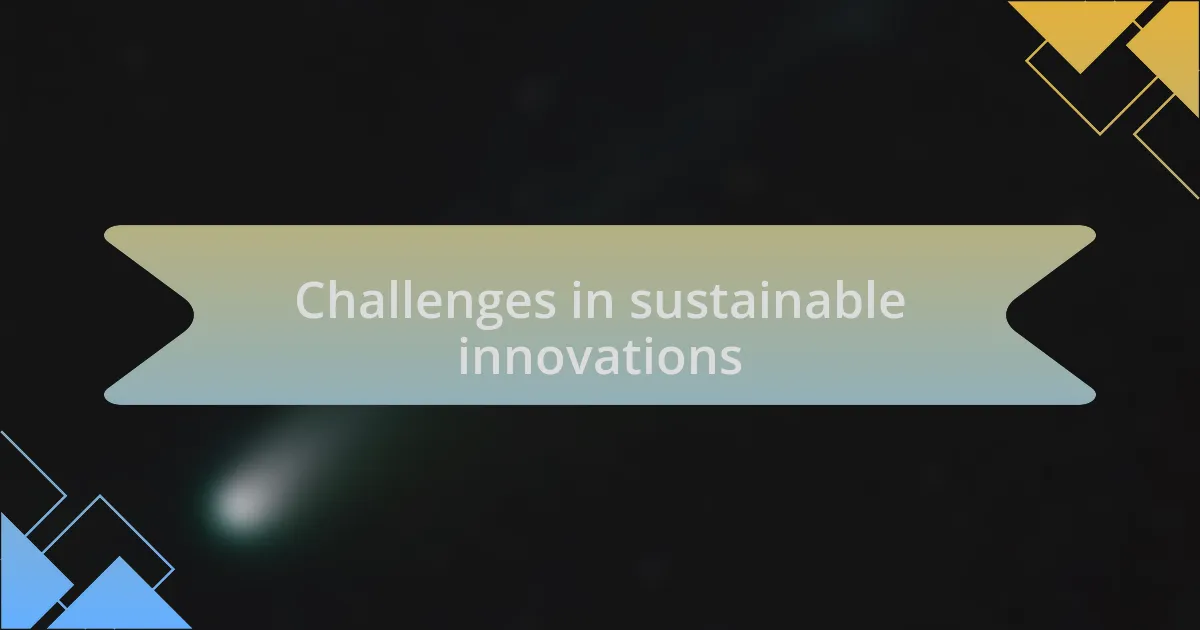
Challenges in sustainable innovations
When it comes to sustainable innovations, one of the most significant challenges I’ve encountered is the resistance to change from traditional practices. Old habits die hard, and many industries cling to established methods even when faced with more sustainable alternatives. I remember working with a project that aimed to implement an eco-friendly waste management system in a community. The pushback from local businesses was palpable, illustrating how deeply rooted practices can hinder progress. How often do we let fear of the unknown hold us back from embracing a better future?
Another challenge lies in the balance between cost and sustainability. In my experience, many innovative solutions, like advanced energy-efficient technologies, often come with a hefty upfront price tag. For instance, while consulting on a solar energy initiative, I found that potential investors were hesitant due to perceived financial risks. It made me wonder: how do we ensure that sustainability is not just an aspiration for the wealthy but a viable option for everyone?
Lastly, the gap between research and implementation presents a formidable barrier. I’ve seen groundbreaking studies that offer promising solutions to pressing environmental issues, yet the translation into real-world applications often stalls. A notable project focused on algae as a biofuel source exemplified this. While the research was robust, it faced significant logistical hurdles that prevented it from reaching the market. Isn’t it frustrating to think that brilliant ideas can fade away due to challenges in execution?
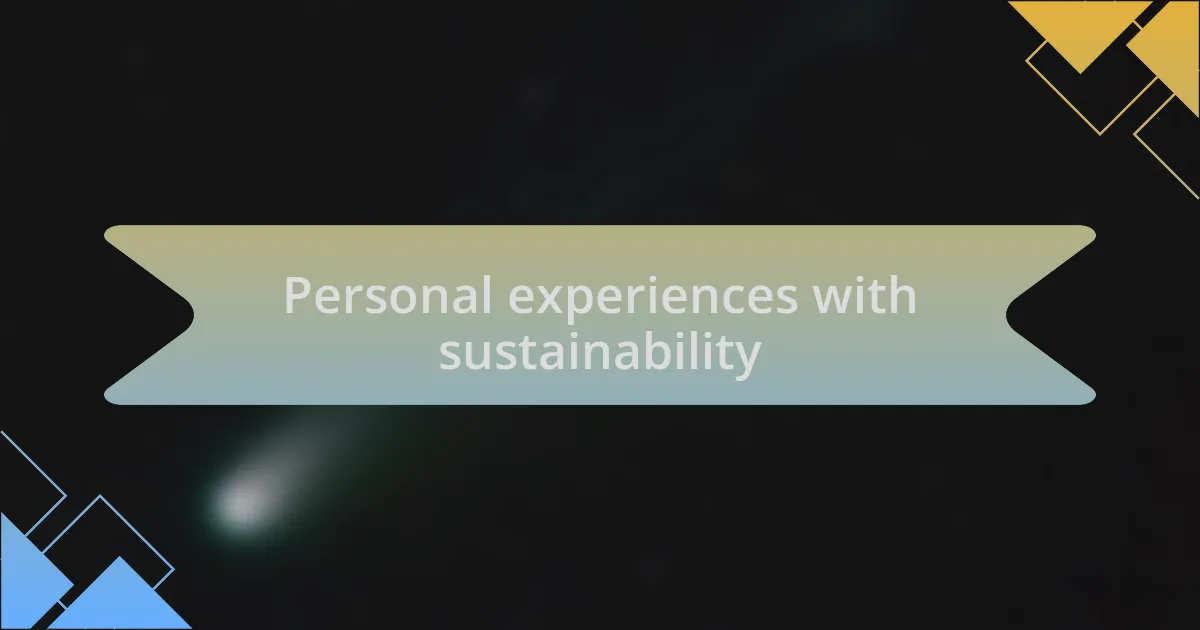
Personal experiences with sustainability
One of my most impactful experiences with sustainability occurred during a community gardening project. I volunteered to help establish a local urban farm, and witnessing the transformation of abandoned land into a vibrant green space was exhilarating. The smiles of families who could now access fresh produce made me realize how sustainability goes beyond the environment; it nurtures community bonds and fosters a sense of ownership. Can something as simple as planting seeds truly change lives?
I remember attending a workshop on sustainable architecture, where a passionate architect shared her journey in designing energy-efficient homes using recycled materials. Her enthusiasm ignited a spark in me, reminding me that sustainable innovations often stem from creativity and collaboration. It got me thinking: how can our environments reflect our commitment to sustainability? It’s about creating spaces that not only function well but also honor the materials and resources that shape them.
Another experience that stands out was during a trip to a renewable energy convention. I met entrepreneurs who were developing low-cost solar solutions tailored for rural communities. Their determination was infectious, yet I also felt a tinge of frustration; why should access to clean energy be a luxury instead of a standard? It left me reflecting on the urgent need for equitable solutions that support all communities in their pursuit of sustainability.
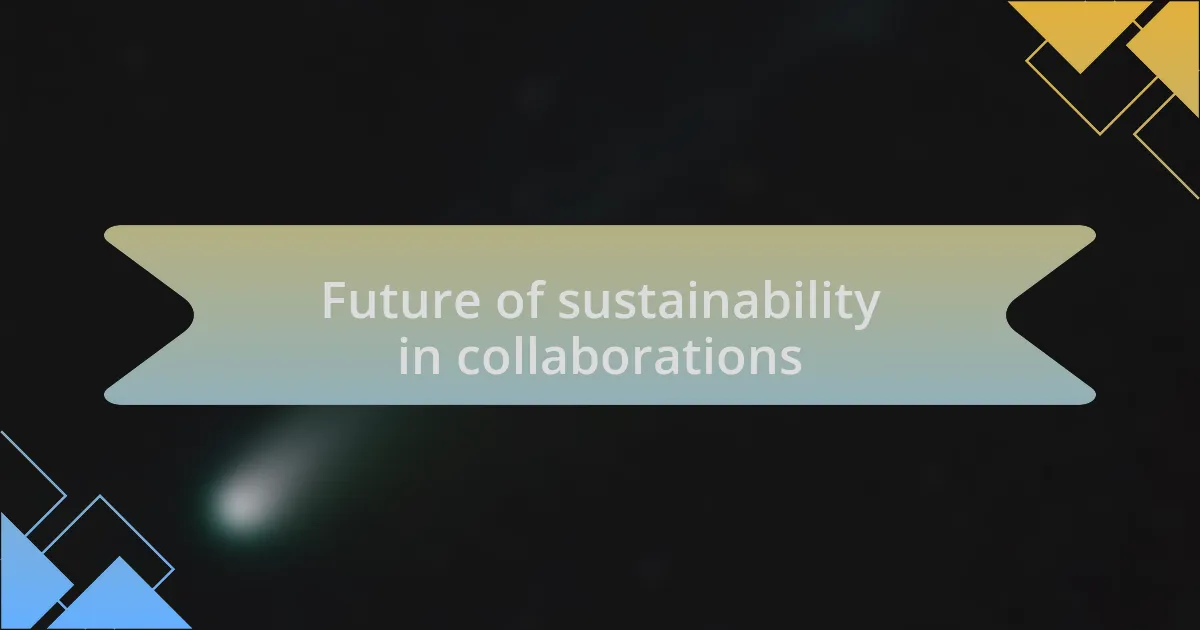
Future of sustainability in collaborations
Partnerships between Africa and Europe in the realm of sustainability are poised to redefine our approach to global challenges. I recently attended a symposium where scientists from both continents discussed joint research on sustainable agricultural practices. The camaraderie in the room left me inspired; it became clear that the future hinges on shared knowledge and resources. Can we truly achieve sustainability without a unified effort?
In another instance, I observed a collaborative project focused on combining traditional knowledge with modern technology. African farmers shared their time-tested methods of crop rotation, while European technologists introduced smart farming tools. This exchange not only honored heritage but also propelled innovation. I found myself asking: how can such collaborations break down barriers and create a more sustainable future?
As I reflect on these experiences, the potential for innovative solutions becomes evident. Collaborations that embrace diverse perspectives have the power to generate breakthroughs. The challenge lies in fostering environments where these partnerships can thrive. Are we ready to embrace this future together?
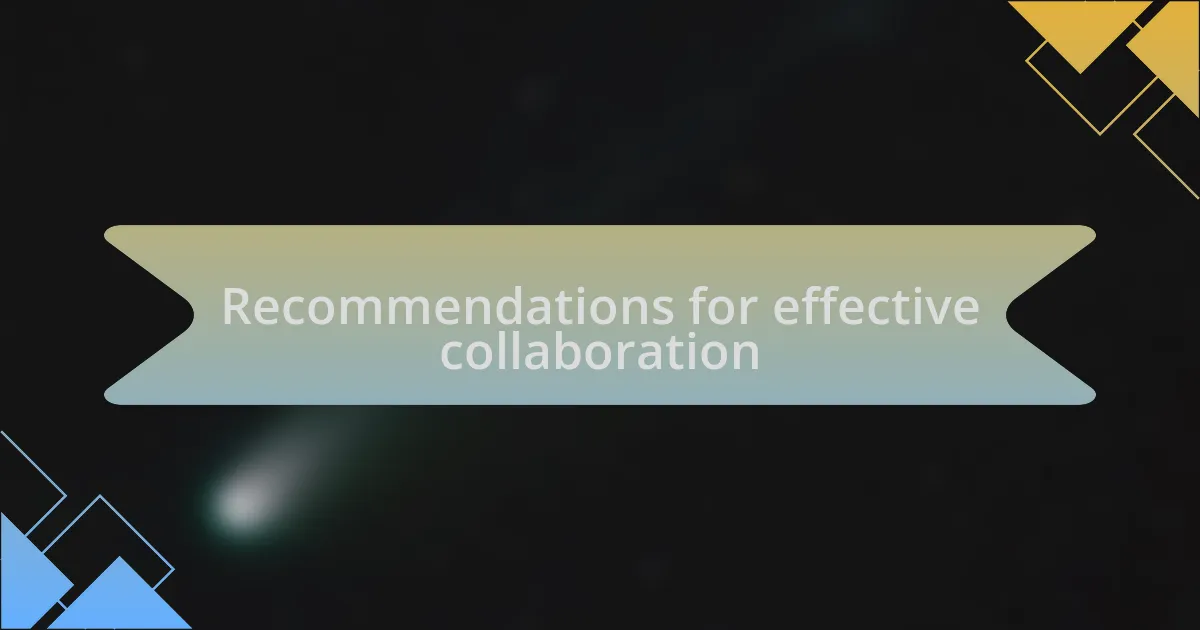
Recommendations for effective collaboration
One effective strategy for collaboration is building trust through open communication. I remember participating in a joint workshop where stakeholders from both continents were encouraged to share their concerns candidly. This transparency fostered a sense of trust and ultimately led to more productive discussions. Isn’t it interesting how a simple act of sharing can lay the groundwork for successful partnerships?
Moreover, I believe that developing shared goals is critical in these collaborations. In a project I was involved in, we took the time to align our objectives, which not only streamlined our efforts but also energized the team. When everyone understands the end goal, it becomes easier to navigate challenges together. Can we really move forward without a common vision?
Lastly, I feel that investing in capacity-building initiatives is paramount. During a recent visit to an innovation hub in Africa, I witnessed firsthand how training local talent could drive sustainable projects forward. It struck me that empowering individuals creates a ripple effect, extending the impact of collaborations far beyond the immediate projects. Don’t you think that sustainable progress is truly rooted in empowering communities?